Medication Adherence
Interactive Mobile health for Asthma Care in Teens
Dr David Fedele and colleagues at the University of Florida and Warren Alpert Medical School of Brown University are testing an interactive mobile health (mHealth) tool to help early adolescents, ages 12–15 years, improve asthma management with caregiver support. The Applying Interactive Mobile health to Asthma Care in Teens (AIM2ACT) study is informed by the Pediatric Self-management model. Feasibility, acceptability, and utilization of AIM2ACT are being measured throughout the trial. Outcomes include asthma management, prescription refill history, lung function, asthma-related quality of life, and self-efficacy for asthma management.
The AIM2ACT app and intervention materials were tailored by gathering feedback from nine dyads of youth with persistent asthma and a caregiver. The app was based on the PiLR Health system from MEI. Features created for this project included presenting separate skills-training videos for adolescent and caregiver, and interactive behavioral contracting between adolescents and caregivers.
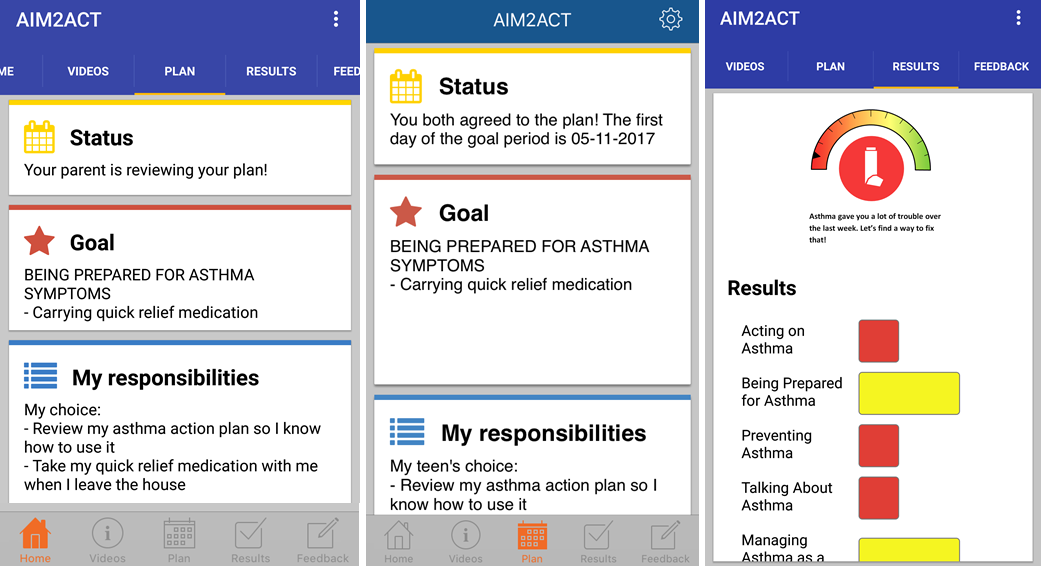
Food environments and dietary intake
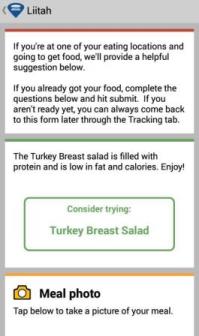
Personal food choice recommendations delivered by location
We created a program that combined our personal location information system (pLIS) for smartphones with the Michigan Pediatric Outpatient Weight Evaluation and Reduction (MPOWER) message system to influence adolescents to make healthier food choices at the time of purchase. pLIS identified when students arrived in food venues and immediately delivered messages specific to each venue. Messages were automatically crafted from MPOWER, the students’ stated food preferences, and cultural perceptions garnered via focus group and survey data. The program was tested over 4 weeks with 20 adolescents recruited from high schools in metro Detroit. Semi-structured interviews were conducted with participants after the trial.

Mobile technology to record dietary intake
MEI has developed several mobile applications that incorporate multiple methods for users to report meals (lookup in food database, annotated meal photo, voice recording with text conversion, etc). One configuration was tested at the USDA/ARS Human Nutrition Research Center (GFHNRC) in Grand Forks, ND on freely-living adolescents (11-14 y.o.). Called “FRapp” it captured images of meals as the preferred input. However, the investigators determined that the adolescents require the timely notifications and reminders, and an ordered sequence of steps, to maintain compliance. Both features are available in the application. The study results were presented at Experimental Biology 2013 and in the Journal of Medical Internet Research.
Another study conducted at GFHNRC tested an app we created that allowed six different entry modes for dietary intake:
- typing in food descriptions
- speech-to-text conversion with automated food item extraction
- record voice for later playback
- capture pre- and post-meal photos
- capture food label/nutrition facts/barcode photos
- and select from recently consumed food sets.
The modes could be configured by investigators or participants, and used singly or in combination. One or multiple food databases can be stored and accessed on the phone or wirelessly. Dietary reports are immediately available by remote access for investigators and could be used for multiple-pass entry (e.g., recall interview supported by earlier inputs).

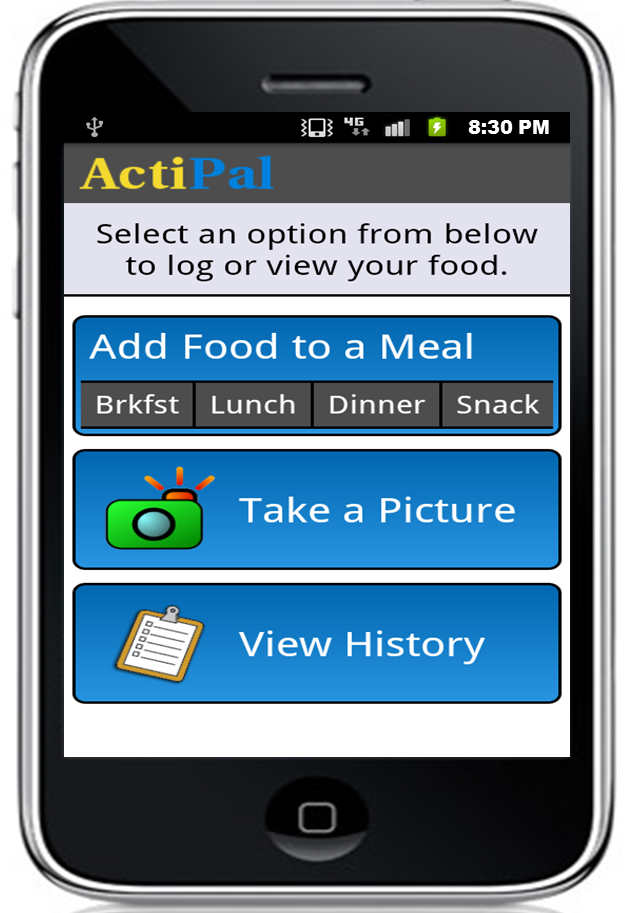
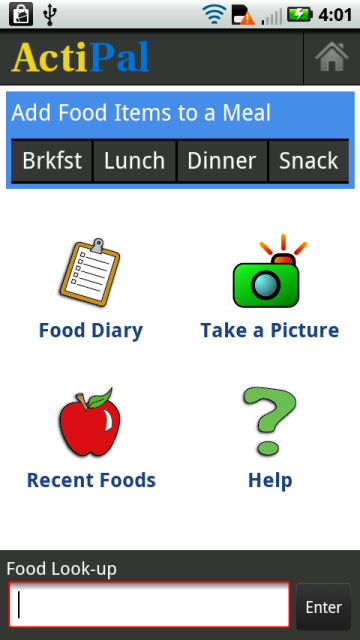

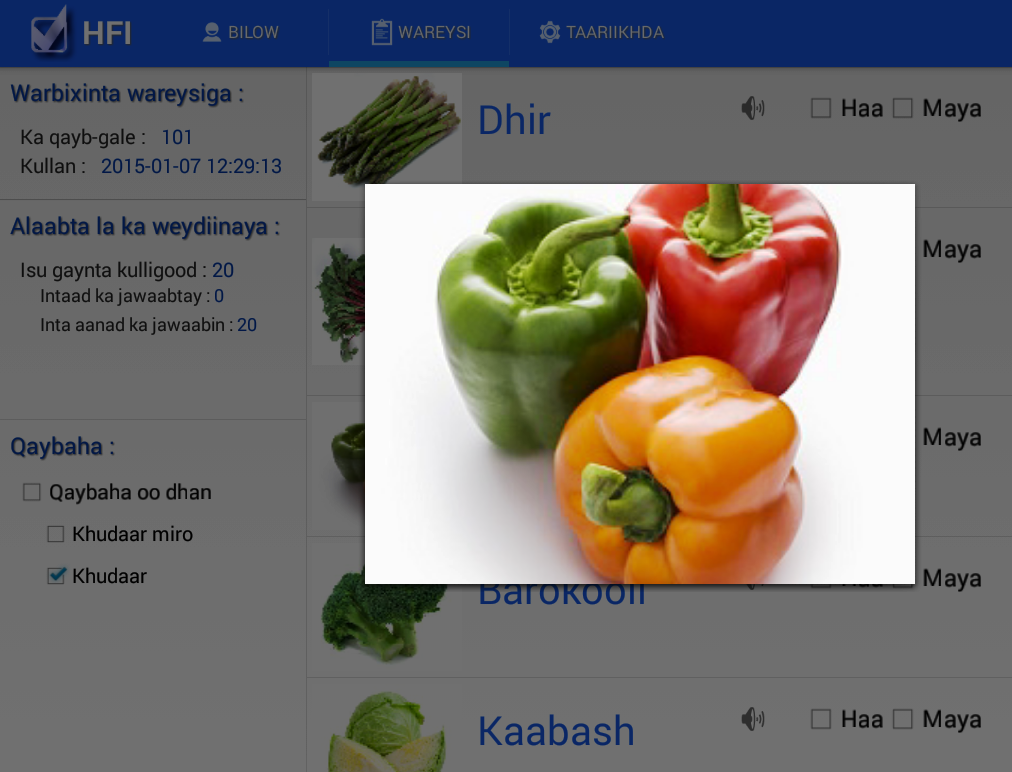
Independent home food environment hyper survey tool for low literacy and vulnerable populations
Characterizing the home food environment is important to understand influences on obesity and appropriate interventions that may fit the needs of vulnerable immigrant households and communities. MEI developed a smart device survey system with researchers at St Catherine University in St Paul, and the University of Minnesota that integrated media-rich, interactive elements to present a question from recorded audio in the user’s native language and allow them to answer by touching graphic icons or a photo. The “eHFI hyper surveys” were tested as a home food inventory tool for low income and literacy families with preschool children. The surveys helped overcome language and literacy barriers present in previous methods.
Aiding weight loss and reducing sedentary time after bariatric surgery
Behavioral psychologists at Brown University, Miriam Hospital are conducting detailed intervention studies of weight retention and gain in patients after bariatric surgery. For the first study, MEI developed a mobile phone application that continuously monitored levels of physical activity using the motion sensors built-in to the phone. Algorithms within the application detect bouts of extended sedentary behavior (e.g., >1 hour), and delivered individually-tailored, goal-driven messages in real time to encourage patients to be active. The application then detected if the patient was active for a minimum targeted time (e.g., 5 min), and delivered positive feedback messages and awards “badges” when patients comply. Patients viewed progress in graphical form through the application, and caregivers track activity and message delivery in real-time through a web portal. This study was presented at ObesityWeek 2013 in “Coordinating Sensor and Subjective Data in mHealth Studies”, and described in detail in “B-MOBILE–a smartphone-based intervention to reduce sedentary time in overweight/obese individuals: a within-subjects experimental trial” published in PLoS One.
Further work will use real-time ecological momentary assessments (EMA) coordinated with objective sensors to gather self-reported information on currently relevant situations, and triggered by the start or end of events measured by the sensors.
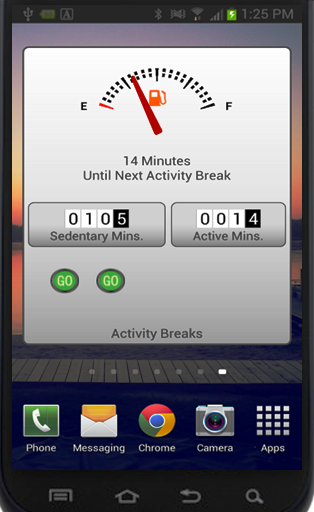

Smoking, tobacco purchases and exposure
Identifying situational factors and place-based practices of tobacco use among high-risk individuals
Julia McQuoida, Johannes Thrul, and Pamela Linga recently completed a pilot of, “A geographically explicit ecological momentary assessment (GEMA) mixed method for understanding substance use“. GEMA was combined with an adaptation of the travel diary-interview method often employed in space-time geography, exploring three cases of bisexual young adult smokers.
EMA questions sampled individual internal and external situations. The number of survey questions was limited not interfere with daily activities. The software automatically logged responses with GPS coordinates when completed survey were submitted. All data were time and date stamped to allow for temporal analysis of smoking behavior.
Participants were asked to report every time they smoked a cigarette. A random subset of up to three of these each day triggered a survey prompt. The likelihood for a cigarette report to trigger a survey was adjusted according to the participant’s baseline smoking rate. Participants also were prompted at three random times per day to complete a survey to assess non-smoking situations.
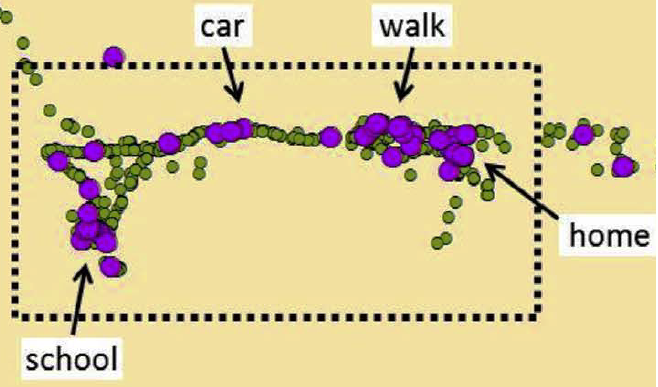
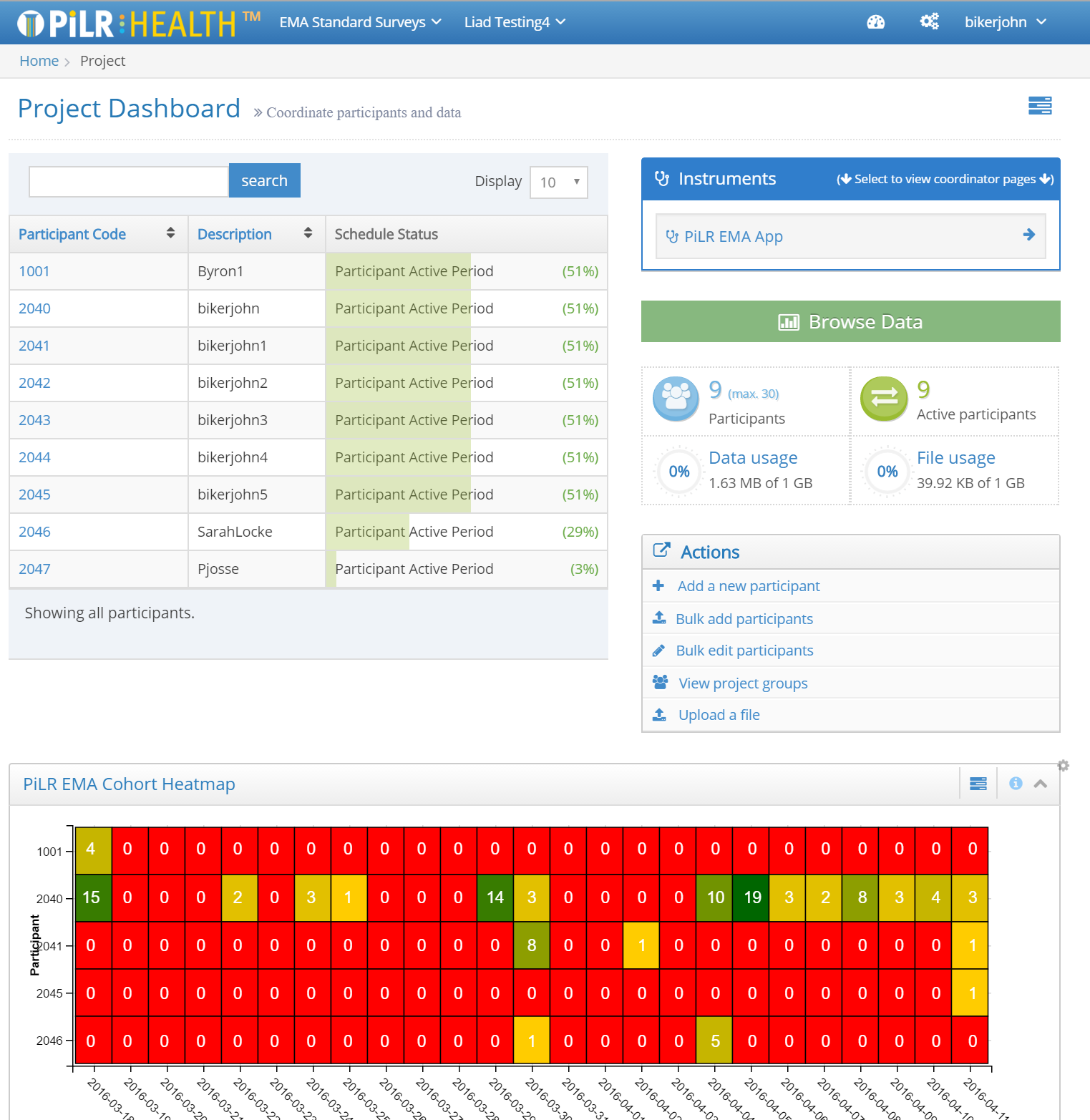
Neighborhood factors that contribute to tobacco use among young adults
The project uses a version of PiLR EMA customized to:
- Allow participants to report each time they use tobacco. This will run in the EMA app according to an algorithm in the background that chooses randomly selected events the participant has to complete for additional EMA assessment (depending on their base rate of use to keep participant response burden reasonable).
- Track time spent in various neighborhoods and deliver a system notification when location changes significantly.
- Provide feedback to participants based on their total performance/compliance; specifically giving them feedback on the percentage of random prompts they responded to and the average or median time it took them to respond (from scheduled notification).
- Create a custom dashboard on the PiLR Health backend web portal to provide researchers with the same performance/compliance information given to participants.
Smoking during and after pregnancy
MEI developed a mobile phone application to assist studies on associations of progesterone, estradiol and other sex hormones with smoking rates and behaviors in women of child-bearing age. It can track mood, medication and smoking episodes, and delivers surveys periodically to capture timely contextual information without recall bias. One study completed at the University of Minnesota enrolled 46 pregnant women who were past smokers randomized to progesterone or placebo. Daily EMA after birth confirmed breastfeeding and evaluated mood and smoking-related symptomatology with the Subjective State and Edinburgh Postnatal Depression Scales. Participants were compensated for each EMA completed.
Smoking patterns and context in emerging adults
The objective of these studies at the University of Southern California was to use data collected on ecological contexts of cigarette smoking among young adults (18 and 25 y.o.) to develop a targeted, mobile-delivered intervention program. Psychological, social and environmental contexts of smoking patterns are explored in real-time, using smartphones (either provided by the investigator or the participant’s phone) running an MEI application. Participants record smoking events by touching a screen widget. EMA surveys are administered on the phone on a random subset of smoking events, and periodic non-smoking occasions throughout the day to assess context during non-smoking behaviors. All data obtained via the smartphone is time-stamped and uploaded in real time for assessments by investigators.
Young Adult Attitudes Toward Tobacco Marketing
Researchers at the Ohio State University used Ecological Momentary Assessments to understand the landscape of tobacco marketing to young adults, and how they respond to it. Young adults (18 and 28 y.o.) and balanced on gender and tobacco-use history carried smartphones equipped with the PiLR EMA app containing custom content for ten days. The 10-day EMA reporting period always began on a Friday morning and ended on a Sunday night. During this time, participants were prompted to complete 3 surveys/day, in response to a notification that alerted them at random times between 10 am and 10 pm a new survey was available. Surveys remained available for a 1-hour window. The surveys asked about their exposures and responses to tobacco-related advertising. Results of the study are presented in “Tracking Young Adults’ Attitudes Toward Tobacco Marketing Using Ecological Momentary Assessment (EMA)” by Megan E. Roberts, Bo Lu, Christopher R. Browning & Amy K. Ferketich.
Alcohol and risky behaviors
Alcohol use and sexual behaviors among adults at risk for sexually transmitted infection
MEI developed a smartphone EMA app for the Center for Alcohol and Addiction Studies at Brown University to investigate cognitive and affective processes relating alcohol use and sexual behaviors among adults at risk for sexually transmitted infection. The app captured alcohol use, sexual activity, and putative mediators by asking participants to self-identify these events and by delivering six surveys per day on a randomized schedule. After drinking alcohol participants were prompted to submit a brief report through the app.
The PiLR System allowed researchers to configure “context contingency” features that limited participant burden and ensured that random surveys, which are designed to measure processes outside of drinking episodes, were not delivered during a drinking episode. The contingencies (1) suppressed the random surveys for 3 h after self reports of alcohol consumption, and (2) delivered follow-up messages every 30 min after the start or end of an alcoholic drink, requesting that the participant indicate whether he/she had finished or started another drink, respectively.

Built environment and physical activity
Physical Activity and Redesigned Community Spaces (PARCS) Study
This project is underway by the New York City Department of Parks and Recreation (NYC Parks) and the City University of New York Graduate School of Public Health and Health Policy (CUNY SPH) to assess the impact of the Community Parks Initiative (CPI). CPI is redesign and renovation effort of New York City, to improve physical activity, park usage, psychosocial and mental health, and community wellbeing. Approximately 1380 participants will be enrolled for 3 years (780 in 30 intervention neighborhoods and 600 in 20 socio-economically matched control neighborhoods). The PiLR EMA™ application from MEI is installed on participants’ own phone to perform several functions:
- it assists study staff to register the participant and obtain electronic written consent
- it is the platform for time/location-triggered (e.g., park usage) and annual surveys (i.e., psychosocial questionnaires)
- it tracks the participant usage of study parks
- it delivers phone/text reminders will be sent to participants to ensure accelerometer and survey compliance.
![]()
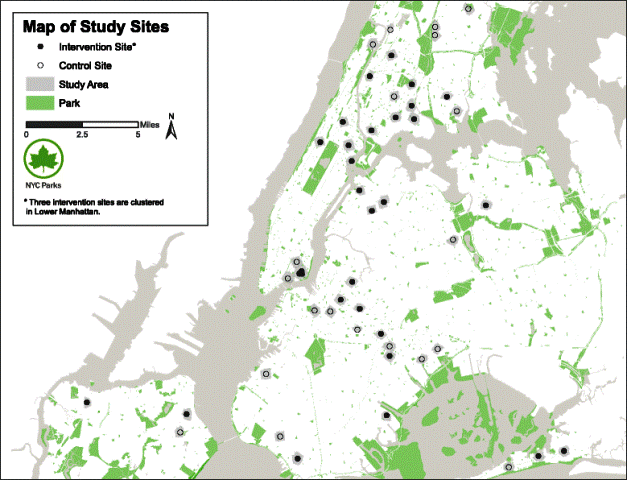
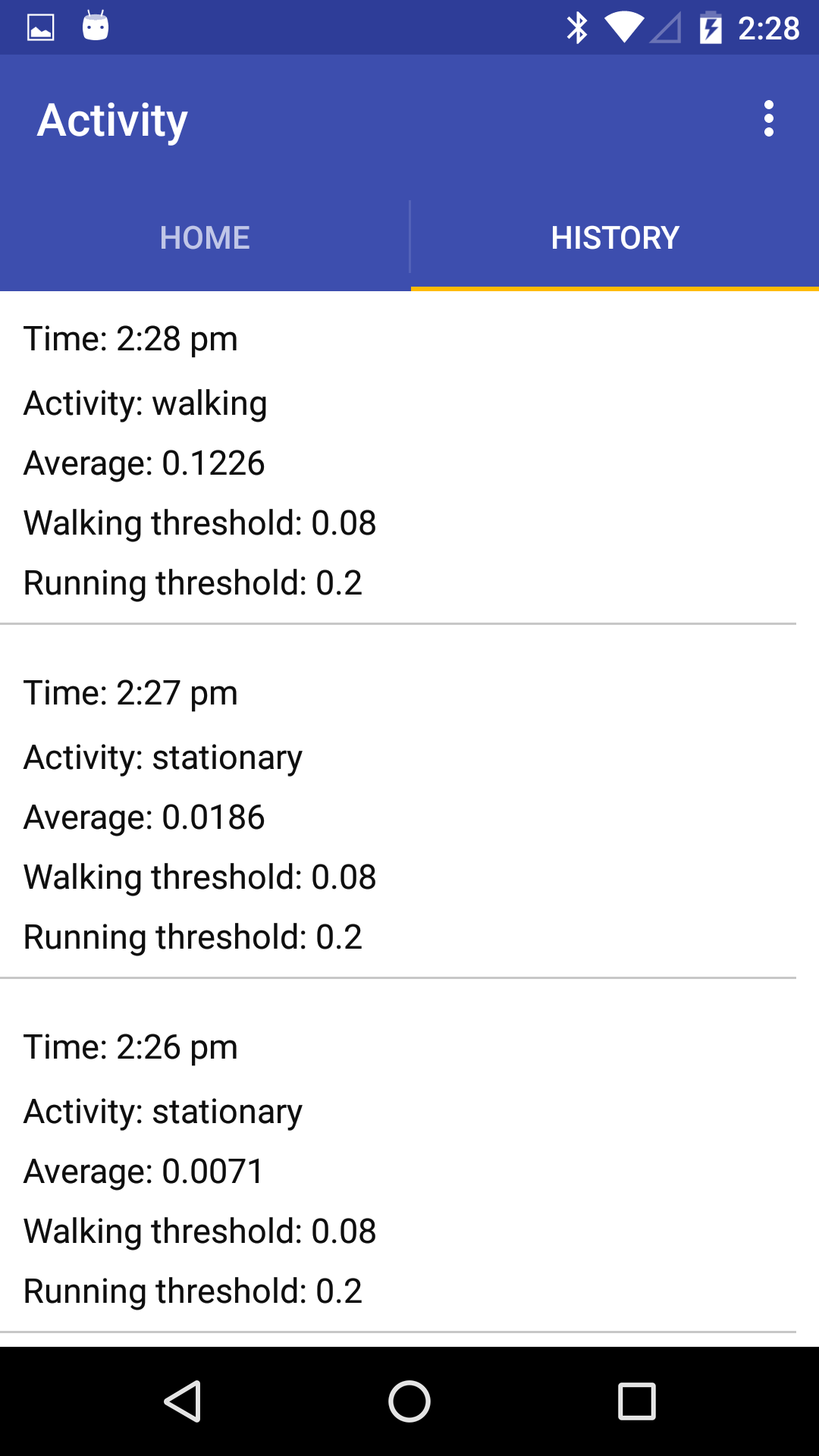
Physical activity counseling
The USPSTF, AHA, ACSM and AAFP have similarly recommend intensive behavioral counseling to promote physical activity and/or a healthful diet for adults who are overweight or obese and have one or more additional CVD risk factors. Realistically, physicians do not have the time, training, of financial incentive to conduct such activities. This project in West Virginia is comparing the efficacy of telephone counseling assisted by a smartphone app with to an intervention using the smartphone exclusively to reduce sedentary behavior among overweight or obese adults with additional CVD risk factors (hypertension, hyperlipidemia, diabetes, or tobacco use).
Integrating Public Resource and Contributed Data for Research and Policy
MEI Research and Iowa State University are collaborating on an initiative to make it easy for non-expert users to use data from multiple sources and grapple effectively with real world challenges. The tools that planners and analysts use are improving, but there is no solution that allows someone with modest experience to collect data from multiple sources, understand how to analyze it, and determine which data elements from different datasets can be processed together to yield an effective result. The key elements are:
- Develop a fully scalad Extract, Transform, Load (ETL) system that progressively simplifies and incorporates complex queries across multiple data resources for the benefit of less skilled users.
- Build visualization, statistical and presentation functions that enable analysis of complex queries in geospatial and non-geospatial layers.
- Empower individuals to provide information through a mobile data collection system that enables decisions that could not be made solely from existing data resources.
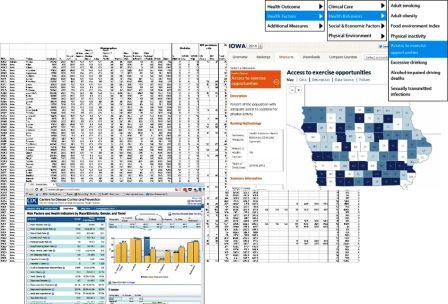

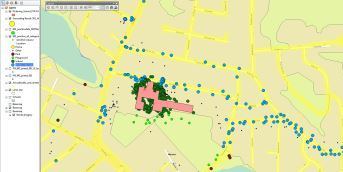
Integrating mHealth and systems science: A combination approach to prevent and treat chronic health conditions
In this paper the authors proposed it is time for a synergy between mHealth and systems science. This approach should be part of the next generation of public health interventions for chronic health conditions.


